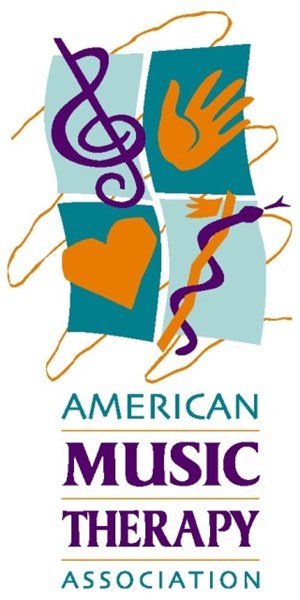AMTA Press Release on Music Therapy - Jan. 2014
January 23, 2014 07:00 PM
 FOR IMMEDIATE RELEASE
FOR IMMEDIATE RELEASE
Al Bumanis
AMTA Director of Communications
(301)589-3300, ext. 103 / Bumanis@musictherapy.org
SETTING THE RECORD STRAIGHT:
What Music Therapy Is and Is Not
January 23, 2014—SILVER SPRING, MD— The American Music Therapy Association (AMTA) supports music for all and applauds the efforts of individuals who share their music-making and time; we say the more music the better! But clinical music therapy is the only professional, research-based discipline that actively applies supportive science to the creative, emotional, and energizing experiences of music for health treatment and educational goals. Below are a few important facts about music therapy and the credentialed music therapists who practice it:
- Music therapists must have a bachelor’s degree or higher in music therapy from one of AMTA’s 72 approved colleges and universities, including 1200 hours of clinical training.
- Music therapists must hold the MT-BC credential, issued through the Certification Board for Music Therapists, which protects the public by ensuring competent practice and requiring continuing education. Some states also require licensure for board-certified music therapists.
- Music Therapy is an evidence-based health profession with a strong research foundation.
- Music Therapy degrees require knowledge in psychology, medicine, and music.
These examples of therapeutic music are noteworthy, but are not clinical music therapy:
- A person with Alzheimer’s listening to an iPod with headphones of his/her favorite songs
- Groups such as Bedside Musicians, Musicians on Call, Music Practitioners, Sound Healers, and Music Thanatologists
- Celebrities performing at hospitals and/or schools
- A piano player in the lobby of a hospital
- Nurses playing background music for patients
- Artists in residence
- Arts educators
- A high school student playing guitar in a nursing home
- A choir singing on the pediatric floor of a hospital
Finally, here are examples what credentialed music therapists do:
- Work with Congresswoman Giffords to regain her speech after surviving a bullet wound to her brain.
- Work with older adults to lessen the effects of dementia.
- Work with children and adults to reduce asthma episodes.
- Work with hospitalized patients to reduce pain.
- Work with children who have autism to improve communication capabilities.
- Work with premature infants to improve sleep patterns and increase weight gain.
- Work with people who have Parkinson’s disease to improve motor function.
AMTA’s mission is to advance public awareness of the benefits of music therapy and increase access to quality music therapy services in a rapidly changing world. In consideration of the diversity of music used in healthcare, special education, and other settings, AMTA unequivocally recommends the unique knowledge and skill of board certified music therapists.
###
For more information on this topic please visit the American Music Therapy Association at www.musictherapy.org and click on the Research tab. To set up interviews with board certified music therapists please contact AMTA at (301)589-3300.
Background informtion
1. American Music Therapy Association
2. Brain injury:
Bradt, J., Magee, W.L., Dileo, C., Wheeler, B.L., & McGilloway, E. (2010). Music therapy for acquired brain injury. Cochrane Database of Systematic Reviews, 2010(7), doi: 10.1002/14651858.CD006787.pub2.
3. Lessen effects of dementia:
4. Reduce asthma episodes:
5. Reduce pain:
6. Improve speech in people with Autism:
7. Improve sleep patterns and increase weight gain in premature infants:
8. Increase motor function in people with Parkinson’s:
Clair, A. A., Lyons, K., & Hamburg, J. (2012). A feasibility study of the effects of music and movement on physical function, quality of life, depression, and anxiety in patients with Parkinson disease. Music and Medicine, 4 (1), 49-55.
Back